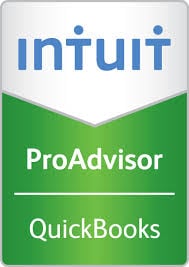 QuickBooks is one of the most recognized names when it comes to accounting software for small businesses. It is popular in bookkeeping because it is easy to use, helps organize finances, and keeps everything all in one place. Bookkeeping services come in different types, allowing users to explore a variety of features and capabilities. When used the right way, QB can be a powerful tool in managing the important aspects of a small business.
QuickBooks is one of the most recognized names when it comes to accounting software for small businesses. It is popular in bookkeeping because it is easy to use, helps organize finances, and keeps everything all in one place. Bookkeeping services come in different types, allowing users to explore a variety of features and capabilities. When used the right way, QB can be a powerful tool in managing the important aspects of a small business.
Once you have decided to use QB for your bookkeeping needs, there are a number of things that you should learn. The following will help you understand and eventually create a strong bookkeeping system for your business:
-
Reconciling accounts: This is probably the most important task of all. When you reconcile your accounts into QuickBooks, all of your transactions will be recorded. Bear in mind that you have to reconcile each and every account that you have. This means that you should not only give focus to your bank accounts, but include your loans, lines of credit, and credit cards as well.
-
Bills on QuickBooks: This piece of software allows you to enter your bills and pay them right then and there. QuickBooks lets you handle your accounts payable. In this case, you should learn how to either use the bill payment online - which is linked to QB - or print your checks. There are two ways that QB manages your bills: First, you enter your bill, which increases your accounts payable and your expense account. Second, when a bill is paid, QB will decrease accounts payable and decrease checking or cash. Then, it will transfer the liability to a credit card.
-
Undeposited Funds: Many users find this feature a little bit difficult to understand. If you are going to use QB as an integral part of your bookkeeping activities, you should understand undeposited funds. This account is similar to the customer payments you have recorded in your QB file, but they have not been deposited into the bank. When you make an invoice using QB, you are increasing your accounts receivable as well as your sales. When you receive payment, you increase your undeposited funds, which in turn decreases your accounts receivable.
-
Memorized Transactions: QB makes everything super simple, especially with this tool. Memorized transactions let you automatically check payments, enter your bills, create invoices, or write a journal entry. You can activate this feature a number of ways, including by hitting Ctrl+M on your keyboard.
-
Ask My Accountant: If you ever need to ask questions or you have transactions that you would like to know more about, you should have this feature ready. It is important that you review all your transactions and have them coded properly before you file your taxes.
For those who have been operating their business for some time, it is ideal that they have their QuickBooks records to match with their tax or accountant's records. All these pieces of information can be overwhelming, but once you get the hang of it, QB makes keeping your business on track much easier.













